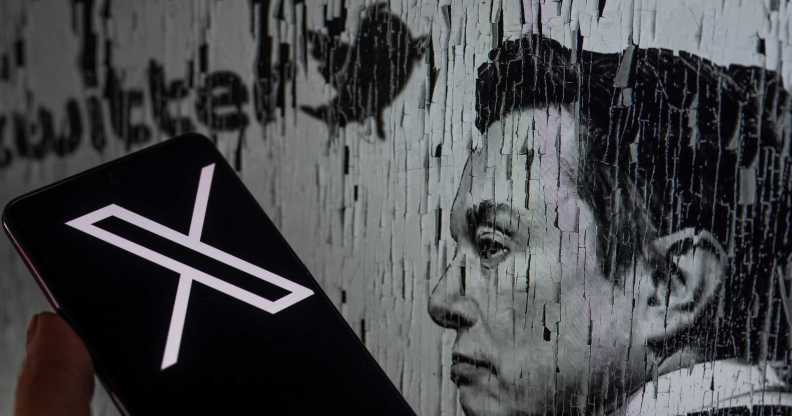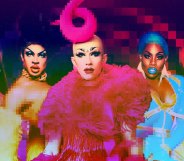Elon Musk is threatening to remove the ‘block’ button on X – here’s why it matters for queer users

Tech bro Elon Musk has promised to remove the block feature on X, formerly known as Twitter, which is particularly bad news for LGBTQ+ users. (Getty Images)
Tech bro Elon Musk has continued his bizarre overhaul of Twitter – sorry, we mean X – and this time, he’s declared war on the block button.
It’s unclear whether Musk can logistically and legally remove the block button as a feature in the way he wants to, and how long this would take if he does go ahead with it.
If he did remove the block button, he would be in violation of the Google Play and Apple’s App Store policies which require apps to have a feature that restricts unwanted contact. So X, may no longer be listed on the app stores, but it would still be available through a web browser.
However, Musk’s decision-making as owner of the platform has been somewhat erratic, so there’s always a possibility we will witness the end of a necessary, useful function.
If the block button is removed, users are likely to have little protection from a cesspit of scammers, spammers and harassers – and it would be marginalised people harmed the most in this scenario.
Why does Elon Musk want to remove Twitter’s block button?
“Block is going to be deleted as a ‘feature’, except for DMs,” Elon Musk posted on Friday (18 August), which he followed up with: “It makes no sense.”
His post was given a “community note”, which users can add to provide important context, outlining that X would be “in violation of the policies of the App Store as well as the Google Play Store” with a potential for X being removed from these platforms if the block function is removed.
Musk has a long-standing issue with the block button.
In June 2023, the Tesla owner said that the app should remove blocking in favour of “a stronger form of mute,” and he’s also complained about large block lists and mass blocking campaigns against users who pay for Twitter Blue – the subscription service that gives perks to paying users, including the once-valuable verification blue tick.
Since legacy verification was removed from the non-paying accounts of notable users in April this year, the verification mark now signifies that an account subscribes to Twitter Blue – and nothing else. It has led to the hashtag #BlockTheBlue trending, as many users now consider the blue checkmark a badge of shame or an indication of accounts to avoid.
Why does it matter for LGBTQ+ users if the block button is removed?
Block, mute, delete – these features give us the ability to control who can access our social media profile and avoid harassment and spam.
Muting is another kind of moderation feature, but it doesn’t stop users from being able to reply to posts and stalk your account. Blocking is the only way to fully remove someone – and the feature is especially important for marginalised people.
LGBTQ+ people, women and minorities are more likely to face online abuse and harassment. Removing the block button simply makes them less safe online, period.
While Musk and others who share his views argue that the block button keeps people in online bubbles as they can block people they don’t agree with politically, the reality is that people don’t want to – and shouldn’t have to – read threatening and abusive messages every day.
Research from July found that LGBTQ+ users are increasingly turning their back on mainstream social media platforms over safety concerns, and trolling and abuse can be so bad that some queer people have been forced off social media, a 2020 report from LGBTQ+ anti-violence charity Galop found.
Queer people face significantly more abuse online than their straight counterparts, with 70 per cent of lesbian, gay and bisexual adults reporting that they had encountered online harassment, compared to around 40 per cent of straight adults, according to a 2022 UK government report.
Since the report was published last year, many companies have developed new technologies and tools to help keep people safe on their platforms. Musk’s attack on the block button represents a huge regression in this area.
Trans TikTok star Dylan Mulvaney recently shared how she uses the block button liberally, after a year of intense transphobic abuse following her sponsorship with Bud Light.
She intended to keep her page open to everyone, in the hopes she could change some people’s minds about her and trans people more broadly. However, she realised this wasn’t going to happen anytime soon, and that blocking people was essential for her own peace and wellbeing.
How did this story make you feel?

